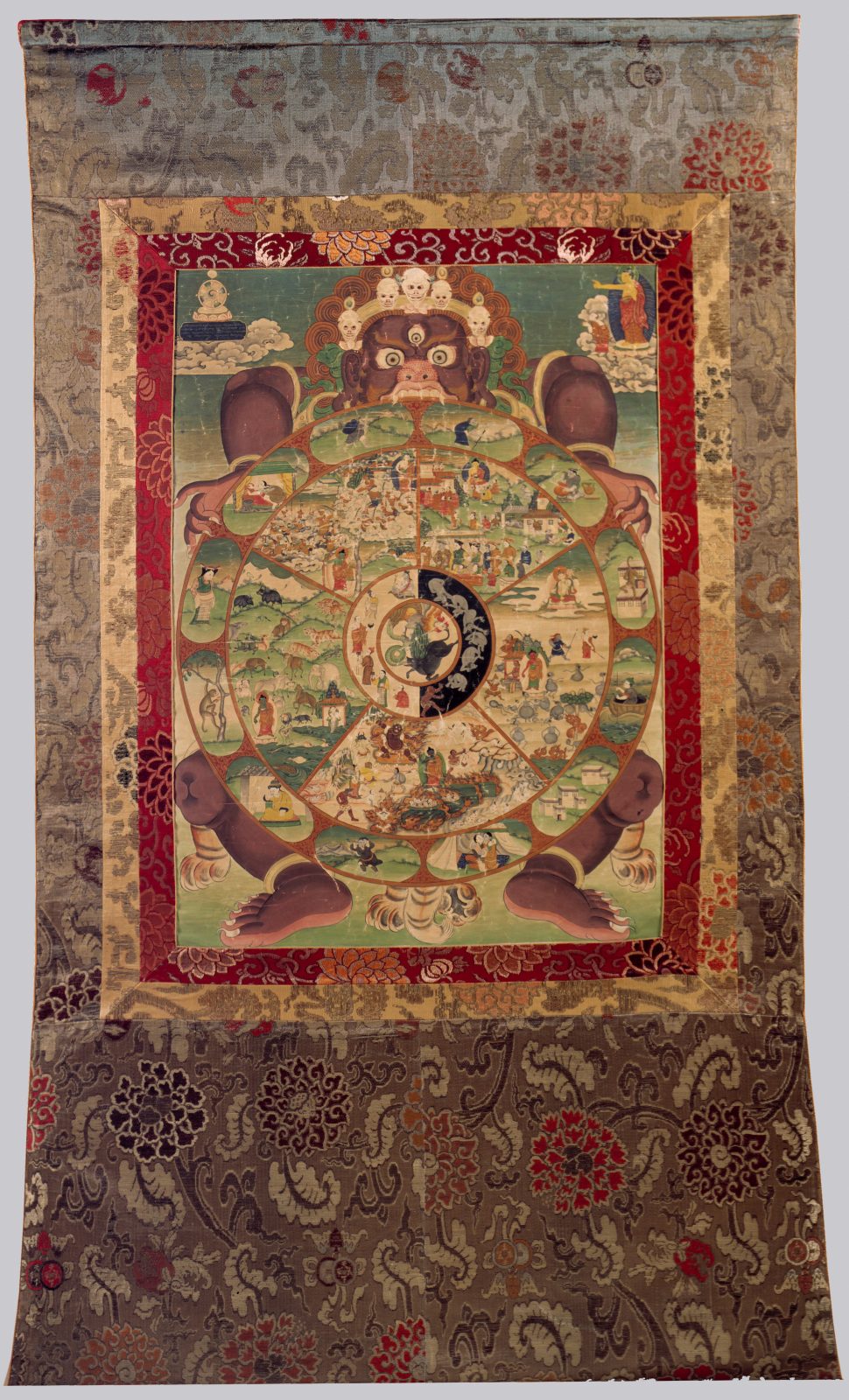
Yangdzom Lama (b. 1997, London, England; lives and works in London, England); Meltdown Samsara; 2022; oil paint on wood; courtesy of the artist

Yangdzom Lama (b. 1997, London, England; lives and works in London, England); Meltdown Samsara; 2022; oil paint on wood; courtesy of the artist
I nearly missed being diagnosed on the autism spectrum. It was only when my mother and I spoke about my meltdowns that the psychologists assessing me changed their minds. At that point I didn’t really know what a meltdown was, even though I had experienced them. I just knew they made me feel ashamed, like I was a bad person, someone incapable of maintaining control over their behavior.
One time, my university housemate shouted at me and waved her keys in my face after I rushed to open the front door for her. The loud jangling baffled me. I proceeded to smash empty beer bottles onto the kitchen floor; it was the only way I could express the overwhelming feeling of being unable to fix a problem. We had been going through a long process of falling out. But I couldn’t let go and so uncontrollable energy boiled to the surface and was released explosively.

Wheel of Life, attributed to Lhadripa Rinzing Chungyalpa (b.1912, Sikkim - d.1977); Sikkim; c. 1930; Pigments on cloth; Rubin Museum of Himalayan Art; C2004.21.1
After every meltdown, that energy—uncomfortably coursing through my veins—would die down eventually. Then exhaustion and shame would creep in. Following that particular meltdown in university, I hid myself away and cried, wondering what was wrong with me. It was scary to experience, and it must have been scary for others to witness.
Lots of things cause autistic meltdowns: a change in routine, sensory overload, social challenges, etc. In the past, I shouted and cried, screamed and roared. I hurt myself physically. I hit or kicked or lashed out at those I loved the most.
After my diagnosis, my mother and I worked on learning my triggers. From there, we realized that walking away was the key to preventing intense reactions to difficult moments. Instead of clinging on to a situation to try to fix it immediately, I began more and more to just wait. I could always come back later when calmer, more lucid.
When I sat down to paint Meltdown Samsara, I was nervous, but I knew that allowing myself to be vulnerable and represent a frightening side of myself would help me understand and avoid meltdowns. Painting teaches you how to let go. When I illustrate a pain I have experienced, I remove it from a dark place within me, bringing it out into the world in an array of bright colors and symbols.
Meltdown Samsara is a deeply personal piece, and my own likeness appears twice. The blue figure inside the circle is a representation of self-destruction and what happens when one clings to the desperate need to fix their surroundings. Bottles of wine, their liquid spilling all over, are a reckless remedy for the meltdown she is experiencing. She holds a hammer, hoping to both mend and destroy her situation, and she runs and runs, believing that escapism is what will help her let go.
As seen in paintings of the Wheel of Life, traditional depictions of samsara—a Sanskrit word denoting the endless cycle of birth, death, and rebirth—often feature a fierce being that represents impermanence. In my version, that being is a red, Yangdzom-like demon. It is my own self who holds the circle and keeps me trapped in overwhelming, negative thought patterns. This is not me trying to demonize myself. In fact, this honest expression of a part of my being is a form of self-forgiveness. Similar to how the frightening depictions of Yama—the Lord of Death—are simply an honest expression of a part of life.
I don’t have as many meltdowns these days. A combination of painting, gardening, and regular acupuncture treatments have helped. Meltdowns are not completely eradicated from my life though—after all, I’m still in samsara. I had a meltdown last winter, when things became too stressful. But it was different from previous ones. I didn’t hurt myself; I didn’t lash out. My boyfriend was with me, and eventually he was able to help me into bed.
I remember the feeling that I just needed to wail out loud, to vocally grieve. I let myself; I surrendered to the fact that there was energy that needed to be released. I knew that I had to let go and wait for the storm to pass.
As another act of letting go, this painting is dedicated to my brother, who has been affected by my meltdowns and is one of the people I love the most.
Yangdzom Lama’s work was featured in the exhibition Reimagine: Himalayan Art Now, on view at the Rubin Museum from March 15 to October 6, 2024.

Yangdzom Lama is a London-based artist whose work consists of paintings, embroideries, prints, and ceramics that often incorporate creatures and nature in the form of animal-headed people and deities. She is influenced by Tibetan Buddhist art and symbolism thanks to her Yolmo heritage, a Tibetan ethnic group that has lived in Nepal for generations. In 2017, Yangdzom was diagnosed with autism spectrum disorder (ASD), which has helped her in embracing herself not only as an artist but as a human being.

Rubin Museum
150 W. 17th St., NYC
Get the latest news and stories from the Rubin, plus occasional information on how to support our work.